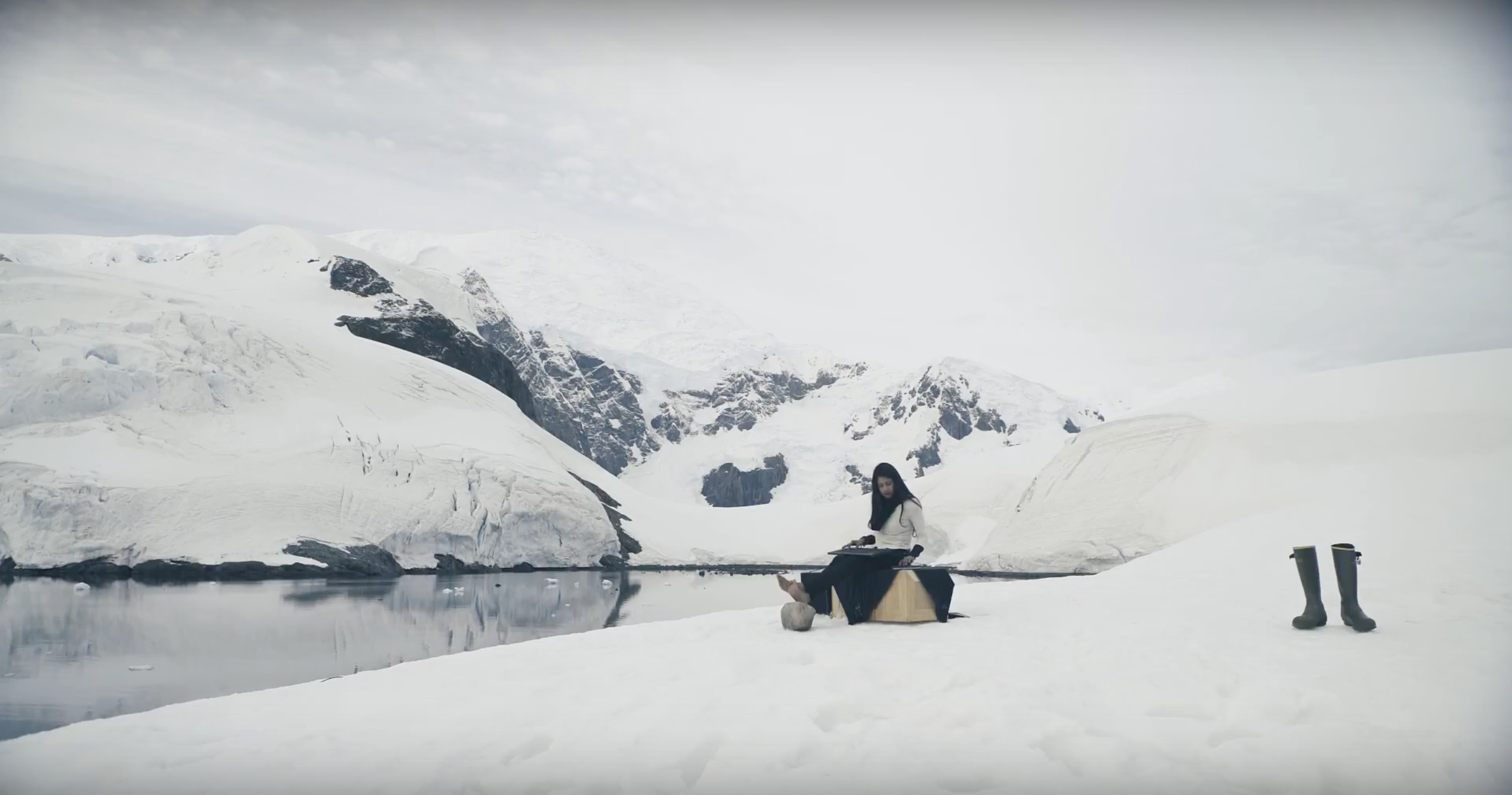Recording the song of Antarctica
Shama Rahman composes with Seaboard RISE, Equator, whalesong, and cracking ice
Shama Rahman performed barefoot with the Seaboard RISE 25 at Paradise Bay, Antarctica.
On the ship to Antarctica were conceptual artists, climate scientists, an architect, and a musician who plays both the sitar and the Seaboard. They were all members of the Antarctic Biennale expedition, a project that asks artists to create something from the world’s harshest and least populated continent. The diverse work of the expedition — much of it commenting on the environment and climate change — is now on display in the Antarctic Pavilion at the Venice Biennale.
Shama Rahman’s Antarctic project was especially multifaceted. The London-based neuroscientist and musician “works at the junction of art and science,” she says. She set out to create a musical work that viscerally captures the Antarctic environment. Dropping hydrophones into the frozen sea and laying them on ice sheets, she recorded in situ sounds of whale song and cracking ice — and is now integrating those sounds in songs and a film.
Her goal is not merely to create atmospheric music. She aims to stage the audience’s interaction with the music so that they literally feel it in their bones through bone conduction. “Hearing the resonance from the whale sounds in the sea was emotional”, Shama says. “I want people to feel and embody Antarctica rather than thinking of it as a separate place where abstract things are happening. The scientific facts about climate change are not reaching everybody in an immediate way, and I want people to have environmental empathy through this work.”
“I want people to feel and embody Antarctica, and have environmental empathy through this work.“


The Seaboard RISE 25, BLOCKS, and Equator were essential to her project. She used Equator sounds like “Icicles” and the pitch-bending capabilities of the instruments to simulate the organic, microtonal nature of the sounds she discovered in the environment. “The Seaboard has let me follow these swooping sounds and microtonalities in a way that no keyboard would ever let me do.” Shama also brought her sitar, and she has a plausible claim to the first Antarctic performances on both sitar and Seaboard.
While the expedition’s ship was docked at Paradise Bay, Shama filmed a live performance on the ice — watch it here. The blimp-like objects in the background are aerocenes that form part of a project by Argentinian artist Tomás Saraceno. Despite the Arctic temperatures, the filmmaker asked her to remove her shoes to improve the film composition. “You’ve got to suffer for your art”, Shama was told. The expedition leaders were alarmed. She avoided frostbite. But the risk of injury within minutes was, like the iceberg-crossed seas around them, a reminder of the danger inherent in the landscape.
Antarctica has once made headlines as a symbol of the rapid changes occurring in the earth’s environment, after a 6,000-square-kilometer piece of the Larsen ice shelf broke free last month. Many nature documentaries have attempted to transport people to the continent and draw attention to climate change. Shama’s new approach is through music, and she will take her tracks on stage in a series of upcoming performances later this year.
“Truth BeTold”, a single from Shama’s upcoming album of the same name, is released on September 8. Get tickets to her September 7 single launch in London here. Shama will also perform at Bestival in Dorset, UK.
Join the ROLI community